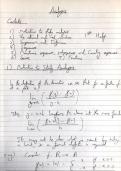Archimedean property - Study guides, Class notes & Summaries
Looking for the best study guides, study notes and summaries about Archimedean property? On this page you'll find 5 study documents about Archimedean property.
All 5 results
Sort by
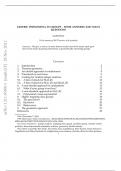
-
GENERICPHENOMENAINGROUPS–SOMEANSWERSANDMANY QUESTIONS
- Exam (elaborations) • 26 pages • 2024
-
- $16.99
- + learn more
4 IGORRIVIN f irst, let’s talk about what it means for some property P to be generic for some (possibly) infinite (but countable) set S. 3. Anidealist approach to randomness First, define a measure of size v on the elements of S. This should satisfy some simple axioms, such as: (1) v(x) ≥ 0 for all x ∈ S. (2) The set Sk = {x ∈ S|v(x) ≤ k} is finite for every k. Let now P be a predicate on the elements of S– think of a predicate as just a function from S to {0,1}...
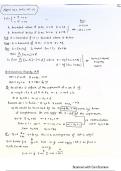
-
Consequences of Axiom of Completeness
- Class notes • 1 pages • 2023
- Available in package deal
-
- $9.64
- + learn more
Explain the proof for the nested interval property, and also the proofs for the Archimedean Property, which is split into two parts.
This document contains definitions, propositions, and theorems that cover the real and rational numbers as part of an introduction to Analysis.
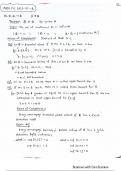
-
Axiom of Completeness and Consequences
- Class notes • 3 pages • 2023
- Available in package deal
-
- $9.64
- + learn more
Introduce Axiom of Completeness, the bed rock of advanced calculus, where every nonempty bounded above subset of R has a lower upper bound (supremum), and every nonempty bounded below subset of R has a greatest lower bound (infimum). Introduce the consequences of the Axiom of Completeness, with the Nested Interval Property and the Archimedean Property.
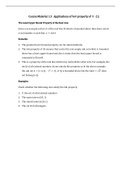
-
By studying the theorem of every topic then it is easy to solve any problems related to it.
- Class notes • 5 pages • 2022
-
- $6.29
- + learn more
The least-upper-bound property is one form of the completeness axiom for the real numbers, and is sometimes referred to as Dedekind completeness.[2] It can be used to prove many of the fundamental results of real analysis, such as the intermediate value theorem, the Bolzano–Weierstrass theorem, the extreme value theorem, and the Heine–Borel theorem. It is usually taken as an axiom in synthetic constructions of the real numbers, and it is also intimately related to the construction of the rea...

Did you know that on average a seller on Stuvia earns $82 per month selling study resources? Hmm, hint, hint. Discover all about earning on Stuvia

